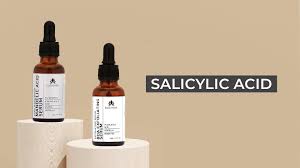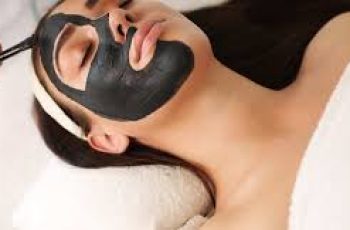
Can You Use Benzoyl Peroxide After Salicylic Acid?
If you’re dealing with acne or blemish-prone skin, you’ve likely heard about two of the most effective ingredients in the skincare world: salicylic acid and benzoyl peroxide.
Both are frequently recommended by dermatologists and found in countless products, from drugstore shelves to prescription formulas.
But here’s the question many ask: Can you use benzoyl peroxide after salicylic acid?
Combining two powerful actives can be tricky, so understanding how they work together — or if they even should — is crucial for maintaining healthy skin.
In this in-depth guide, we’ll cover everything you need to know about these two ingredients, how to use them safely, and tips for incorporating them into your routine without irritation.
By the end, you’ll be confident in managing acne effectively and safely.
Understanding Benzoyl Peroxide: What It Is and How It Works
Benzoyl peroxide (BP) is one of the most widely used and studied acne-fighting ingredients.
It’s considered highly effective at killing Propionibacterium acnes, the bacteria responsible for causing many types of acne, especially inflammatory and cystic acne.
How does it work? Benzoyl peroxide penetrates the pores and releases oxygen molecules.
This oxygen creates an environment where acne-causing bacteria cannot thrive. As a result, it helps reduce the number of breakouts and calms redness and swelling.
BP also has mild exfoliating effects, helping to clear dead skin cells that clog pores and lead to acne formation.
Despite its power, benzoyl peroxide is notorious for causing skin dryness, irritation, redness, and peeling, especially in those with sensitive skin or when first introduced into a skincare routine.
People with conditions like eczema, psoriasis, or seborrheic dermatitis should avoid benzoyl peroxide unless advised otherwise by a healthcare professional.
Salicylic Acid: The Deep-Pore Cleanser
Salicylic acid is a beta hydroxy acid (BHA), which is oil-soluble. This unique trait allows it to penetrate deeply into pores, breaking down the “glue” that holds dead skin cells together.
This ability makes it highly effective at unclogging pores and preventing blackheads and whiteheads from forming.
It’s gentler than many acids but still offers a strong exfoliating effect that helps maintain clear, smooth skin.
Salicylic acid also has anti-inflammatory properties, helping soothe redness and reduce swelling associated with breakouts.
The main downsides are similar to benzoyl peroxide — dryness, irritation, peeling, or stinging can occur, especially if overused or used incorrectly.
Too much salicylic acid can strip your skin’s natural oils, leading to rebound oiliness and potentially more breakouts.
Should You Use Benzoyl Peroxide Before or After Salicylic Acid?
When layering skincare products, the general rule is to apply the thinnest product first, working your way to thicker formulations.
If your salicylic acid product is a liquid toner or serum and your benzoyl peroxide is a cream or gel, you should apply salicylic acid first.
Waiting about 10-15 minutes between applications is ideal. This gives your skin time to rebalance and for the pH to normalize before the next product.
If both products are serums or creams, check the consistency and ingredient list to decide which to apply first.
Can You Use Both in the Same Routine?
Using benzoyl peroxide and salicylic acid together can be effective, but there are important caveats.
Both ingredients exfoliate and can dry the skin, so combined use can increase the risk of irritation, redness, and sensitivity.
For many, the best approach is to use them at different times of the day—for example, salicylic acid in the morning and benzoyl peroxide at night.
This strategy limits the chance of irritation and ensures each ingredient can work optimally.
Alternatively, you could use one active on certain days and the other on alternate days.
How to Build Your Skin Tolerance
If you’re new to either benzoyl peroxide or salicylic acid, start slowly.
Introduce one product at a time, using it every other day or just a few times a week initially.
Gradually increase frequency as your skin adapts and shows no signs of irritation.
Once your skin tolerates one ingredient, introduce the other slowly, following the same “start slow” method.
This approach helps prevent excessive dryness, redness, or peeling.
The Importance of Moisturizing
Using potent acne ingredients without moisturizing can cause significant dryness and compromise the skin barrier.
After applying benzoyl peroxide or salicylic acid, wait until the product is fully absorbed before applying moisturizer.
Choose a non-comedogenic, hydrating moisturizer containing soothing ingredients like hyaluronic acid, ceramides, or niacinamide.
Gel-based or lightweight lotions often work best to lock in moisture without clogging pores.
Proper moisturizing helps maintain your skin’s protective barrier, reducing irritation and improving overall texture.
Why Sunscreen is a Must
Even though benzoyl peroxide and salicylic acid do not inherently increase photosensitivity like retinoids or AHAs, your skin is more vulnerable when exfoliated.
Sun exposure can worsen dryness, redness, and irritation when using these ingredients.
A broad-spectrum sunscreen with SPF 30 or higher should be applied every morning as the final step in your skincare routine.
Physical blockers (like zinc oxide or titanium dioxide) are excellent for sensitive skin types using active ingredients.
Which Ingredient Is Better for Hormonal Acne?
Hormonal acne tends to manifest as deep, inflamed cysts around the jawline, chin, and cheeks.
Benzoyl peroxide is often more effective here because it kills bacteria and reduces inflammation more aggressively.
It tackles large, painful pimples that salicylic acid alone may not clear.
Salicylic acid is excellent for mild to moderate acne, especially blackheads and whiteheads, but may not fully address the severity of hormonal breakouts.
For best results, consult a dermatologist who may recommend a combination treatment including both ingredients.
Tips for Using Benzoyl Peroxide and Salicylic Acid Together Safely
Patch test both ingredients on a small skin area before full application.
Start with lower concentrations — e.g., 2.5% benzoyl peroxide and 0.5-2% salicylic acid.
Use each active on alternate days or at different times of day.
Avoid layering other harsh exfoliants, retinoids, or alcohol-heavy products.
Moisturize well to maintain your skin barrier.
Use sunscreen daily.
If irritation occurs, reduce frequency or stop and seek medical advice.
Common Questions
Can I use benzoyl peroxide immediately after salicylic acid?
It’s best to wait about 10-15 minutes between applying salicylic acid and benzoyl peroxide to avoid excessive irritation.
Alternatively, apply salicylic acid in the morning and benzoyl peroxide at night.
Will using both cause dryness?
Yes, dryness and peeling are common when using benzoyl peroxide and salicylic acid, especially together.
Be diligent about moisturizing and consider spacing out usage if dryness occurs.
Can I apply moisturizer before benzoyl peroxide?
It’s generally recommended to apply moisturizer after benzoyl peroxide to seal in hydration.
Applying moisturizer first may reduce the efficacy of benzoyl peroxide.
How long before I see results?
Consistent use for 6-8 weeks is typically needed to see significant improvements in acne with either ingredient.
Patience is key — don’t give up too soon!
Final Thoughts
Both benzoyl peroxide and salicylic acid are staples in the fight against acne, each targeting different causes.
Used correctly, they can work together to unclog pores, kill bacteria, reduce inflammation, and prevent new breakouts.
However, both are potent ingredients, and it’s important to introduce them gradually and monitor your skin’s response.
Always moisturize and protect your skin with sunscreen when using these actives.
If irritation or dryness occurs, back off and consult a skincare professional.
By understanding how and when to use benzoyl peroxide after salicylic acid, you can achieve clearer, healthier skin without unnecessary side effects.


